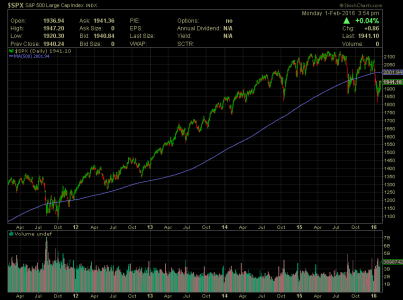I'm trying something new for my buy/sell signals. Basically I am looking to use the MACD(8,17,9) as my buy signal and MACD(12,25,9) as my sell(maybe)....while at the same time keeping an eye on the longer term MACD(65,90,12) to try to avoid any whipsaws. I still cant quite figure out the charts and I don't really know how to back test anything so I am sort of observing and winging it as I go along. Definitely will not even consider exiting equities until I see the MACD(8,17,9) changing direction.
A rare rant, but I feel I needed to speak out on this for the benefit of others.
I feel for you, I was fortunate enough at one time to have the Nija software configured with pre-IFT conditions. With it, I was able to back-test every indicator & timeframe you could think of. Some of these scans were very processor intensive, where I'd have to walk away from the PC for 30 minutes and wait for the results. It was grueling work, I must have spent hundreds of hours and many 12-hour sessions, locked in my office looking for the holy grail, but never did I find it. Unfortunately, my PC has crashed many times since then and I was never able to reconfigure the Nija after their next upgrade, but I did learn many valuable lessons, (not that I've applied them).
Here's some of the things I learned (that I can remember)
1) As a wild unscientific estimate, I'd say 99% of indicators cannot beat the markets.
2) Momentum indicators work better when the markets are trending, but erase the gains when the markets are oscillating.
3) Equally so, oscillating indicators work better when the markets are oscillating, but erase the gains when the markets are trending.
4) If you use indicators, it's very important to know what conditions the markets are operating under (trending vs. oscillating)
5) MA crossovers don't work very well, in fact some of the best scanning results were from short-term inverted crossovers (probably triggered from oscillating market conditions).
6) The best price to MA crossover I scanned (where price was below or above) was with the MA in the low 500s (I think it was either 512 or 518) this was the most profitable for long-term trading. I ended up using the 500 SMA as the best signal (because I like round numbers) If I had to pick 1 MA as a bear market indicator, it is the 500 MA.
Lastly (and most frustrating) the indicator conditions that I found worked best on the S&P 500, did not work nearly as well during different timeframes (Cherry picking) or on other Indexes or stocks, meaning some indicators are custom tailored to only work with a specific symbol during a specific time.



